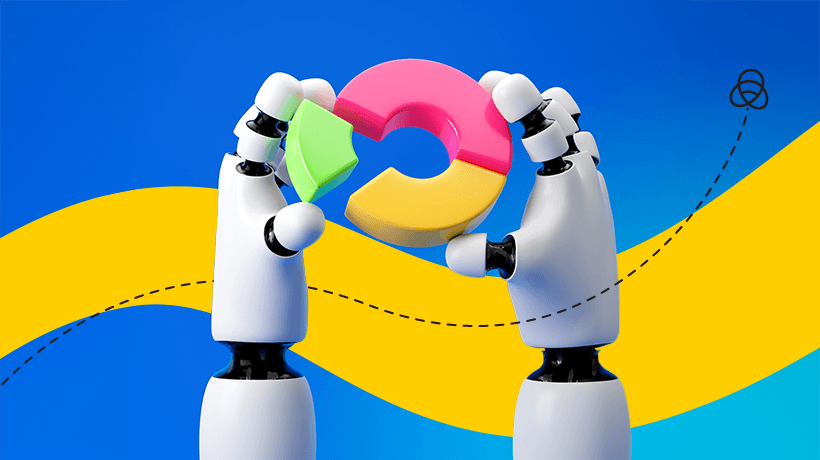Fresh Writers: Humanize Your AI Content
When I mentor fresh writers stepping into digital marketing, the first thing I often hear is: "But AI can write it faster!" And they're right—tools like ChatGPT, Jasper, or Bard can churn out articles in minutes. But here's the catch: if you rely on AI alone, your content risks sounding like every other blog on the internet—flat, repetitive, and soulless.
The Temptation Of The "AI Easy Button"
I learned this lesson while reviewing an intern's article last year. On the surface, it looked polished. But the moment I read it, I knew it was fully AI-generated: generic phrases, no anecdotes, no real-world insight. It ranked nowhere, resonated with no one, and left the client unimpressed. That was the day I realized something critical: AI is a fantastic co-pilot, but you—the human—must be the pilot.
Why Human Touch Matters More Than Ever
Google's Helpful Content Update and EEAT (experience, expertise, authority, trustworthiness) framework make one thing clear: recycled, "AI-flavored" content won't survive. Search engines are rewarding content that feels original, demonstrates lived experience, and adds unique value. For new writers, this is actually a golden opportunity. You don't need ten years of industry knowledge to stand out. You just need to infuse your content with:
- Personal insights (even small ones, like a challenge you faced while learning)
- A conversational tone (write like you're talking to a peer)
- Fresh angles (instead of "Top 10 SEO tips," try "How I cracked my first SEO win as a newbie")
Think of it this way: your lived experience, even if it's just your first attempt at writing an email campaign or SEO blog, can be more powerful than a perfectly worded AI draft. That's because readers crave relatability, not perfection.
5 Practical Ways To Humanize AI Content (Without Losing SEO Power)
1. Start With Your Own Voice
Use AI to get the skeleton, not the soul. For instance, if AI gives you "Email marketing builds relationships," don't stop there. Ask yourself: What's my experience of this? Maybe you once subscribed to a brand's emails and found their storytelling irresistible. Add that anecdote—it makes the point memorable and personal.
2. Layer In Micro-Stories
Even short examples add flavor. Instead of writing: "Short-form content engages users better.", write: "When I posted a 300-word LinkedIn note, it outperformed a 1200-word article because people consumed it on their coffee break." Stories turn plain statements into lessons. They don't need to be grand or dramatic—sometimes your small experiments as a fresh writer are exactly what makes your content real.
3. Add "Why It Matters" To Every Fact
AI tends to list facts. Your job is to translate them into meaning. Example: AI says → "Google prioritizes EEAT." You add → "This means your blog about digital marketing shouldn't just explain SEO tactics. It should showcase that you've actually tried them and seen results." This one step transforms information into insight, and readers will feel the difference.
4. Edit Ruthlessly For Flow
AI-generated text often sounds robotic because it repeats sentence structures. Break the rhythm. Use a mix of short punchy lines and longer reflections. Sprinkle in rhetorical questions. Make it read like a conversation, not a textbook. Think of editing as your "human fingerprint" on an otherwise mechanical draft.
5. Optimize Naturally
Fresh writers often stuff keywords because AI suggested them. Instead, weave them naturally. A reader-first approach pleases both your audience and search engines. Think: Would I say this keyword phrase out loud in a conversation? If not, rephrase.
The Balance To Strike Between You And AI As Partners
The irony is, AI won't replace content writers who use AI smartly; it will replace those who don't. The trick is balance: let AI speed up research and structure, but let you add the flavor, depth, and perspective. When your blog feels like a chat over coffee instead of a Wikipedia dump, you're not just writing content—you're building connection. And that's what Google, clients, and readers reward.
Closing Thoughts
If you're a new content writer using AI, remember: the shortcut can become a dead end if you don't add your own humanity. Algorithms may bring readers to your blog, but it's your voice that makes them stay. So the next time AI hands you a draft, pause and ask yourself: "Where's me in this?" Add the little details—the frustration of rewriting your first headline, the thrill of publishing your first piece, or the lesson from a campaign that flopped. Those personal touches are the heartbeat of authentic writing. Fresh writers can transform AI drafts into engaging, high-ranking blogs. AI may open the door, but it's your human touch that makes readers walk in, sit down, and come back for more.







![Creating In The Age Of AI: How Generative AI Content Is Reshaping eLearning [eBook Launch]](https://cdn.elearningindustry.com/wp-content/uploads/2025/04/Creating-In-The-Age-Of-AI-How-Generative-AI-Content-Is-Reshaping-eLearning-eBook-Launch.jpg)